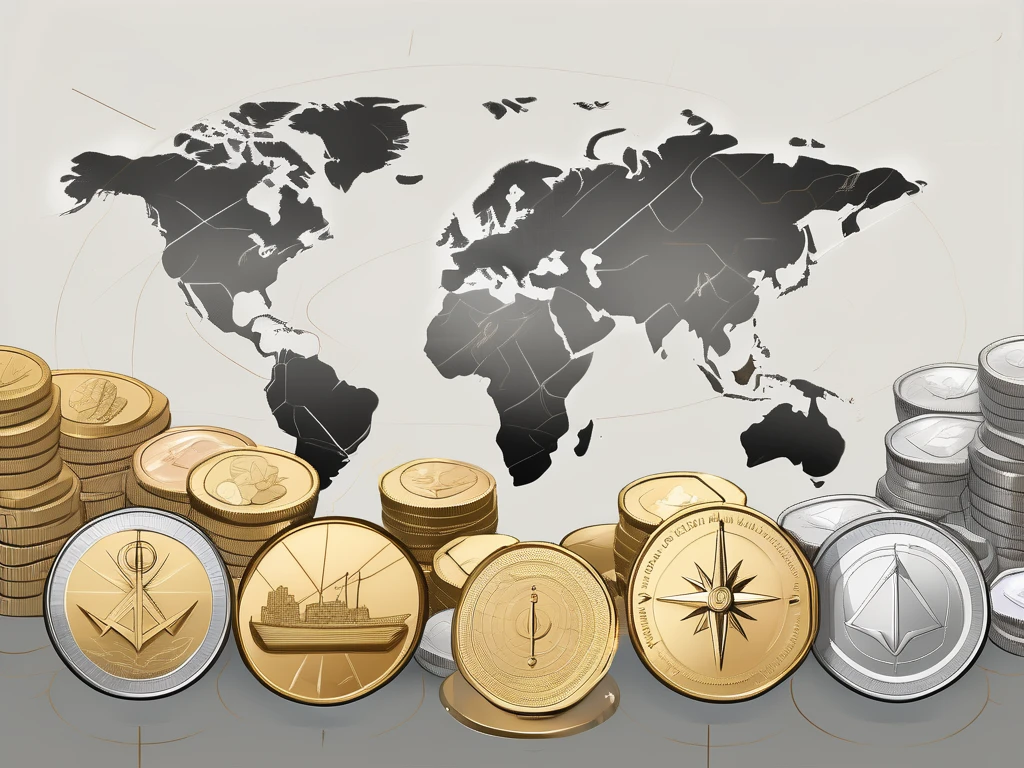Precious metals have always been a cornerstone of human trade and investment, offering both tangible and financial value. In the world of trading, these metals are not only sought after for their physical properties but also for their financial potential. This tutorial will introduce the most commonly traded precious metals, their uses, and why they are integral to modern trading strategies.
Common Precious Metals Traded in Financial Markets
The primary precious metals that dominate the trading markets are:
- Gold: Known as a universal store of value, gold has been used for centuries as a hedge against inflation and a safeguard during economic uncertainty.
- Silver: As both a precious metal and an industrial resource, silver offers traders a mix of investment opportunities, often following gold’s trends but with greater volatility.
- Platinum: Often used in industrial processes like automotive manufacturing, platinum is a rarer and more expensive metal with significant price fluctuations based on demand.
- Palladium: Primarily used in the automotive industry for catalytic converters, palladium’s limited supply and increasing demand make it a popular investment asset.
- Rhodium: An extremely rare metal, rhodium is primarily used in the automotive sector, especially in catalytic converters. Its rarity makes it highly valuable, though it is less commonly traded.
- Ruthenium: While not as well-known, ruthenium is highly regarded in the electronics and chemical industries, making it an important commodity for specialized investors.
- Iridium: Iridium’s resistance to corrosion and its use in aerospace and electronics makes it an extremely valuable and niche precious metal.
- Osmium: The densest naturally occurring element, osmium is used in high-precision instruments and is considered one of the rarest and most expensive metals.
Why Is Gold a Leading Precious Metal in Trading?
Gold has maintained its reputation as the top precious metal in trading due to its historical value, global recognition, and stability. Traders and investors alike turn to gold in times of economic uncertainty, as it typically performs well when traditional markets are volatile. It is often used to diversify portfolios and reduce risk, particularly during times of inflation or geopolitical instability.
How Are Precious Metals Traded?
There are several ways to trade precious metals, each with its own set of advantages and risks. These include:
- Spot Trading: Involves buying or selling precious metals for immediate delivery. Spot trading allows traders to take advantage of short-term price fluctuations.
- Futures Contracts: Futures allow traders to agree on a price for a precious metal at a set future date. These contracts are commonly used for hedging and speculation on price trends.
- Exchange-Traded Funds (ETFs): ETFs track the price of a particular precious metal and are traded on the stock market. ETFs offer a more accessible way for investors to gain exposure to metals without directly purchasing physical assets.
- Options and CFDs: For more experienced traders, options and contracts for difference (CFDs) offer ways to speculate on precious metal prices without owning the underlying asset. These instruments allow traders to profit from both rising and falling prices.
The Industrial Role of Precious Metals
While many people view precious metals solely as investments, they also play a crucial role in various industries. For example:
- Gold: Used in electronics, medicine, and jewelry due to its conductivity and resistance to corrosion.
- Silver: Known for its use in solar panels, electronics, and photography, silver has both industrial and investment demand.
- Platinum and Palladium: Widely used in the automotive industry, these metals are essential in manufacturing catalytic converters, which help reduce harmful emissions.
Why Do Traders Choose Precious Metals?
Traders and investors favor precious metals for a variety of reasons:
- Diversification: Precious metals offer a way to diversify investment portfolios. Their performance is often not correlated with traditional stock markets, making them a valuable asset in uncertain times.
- Hedge Against Inflation: Precious metals, particularly gold, are seen as a hedge against inflation. As the purchasing power of fiat currencies decreases, the value of metals like gold often rises.
- Safe Haven Asset: During times of geopolitical instability or financial crises, precious metals are considered safe haven assets. Traders flock to these metals when global markets are under stress.
- Speculative Opportunities: With their fluctuating prices, precious metals offer opportunities for traders to profit from both upward and downward movements in the market.
Conclusion
Precious metals continue to be a fundamental part of the global trading landscape. Whether used for industrial purposes or as investment vehicles, they offer unique opportunities for diversification, hedging, and speculation. By understanding the characteristics of each metal and how they function in the market, traders can make more informed decisions and navigate the complexities of the precious metals market with confidence.










